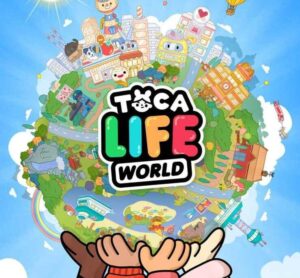Revisiting a Legend: Why Final Fantasy Tactics is More Accessible Than Ever
Popular Now
 Call of Duty
Call of Duty
 Stumble Guys
Stumble Guys
 Roblox
Roblox
 R.E.P.O
R.E.P.O
 Warframe
Warframe
 Toca Boca World
Toca Boca World
 Auto X Drift Racing 3
Auto X Drift Racing 3
 EA SPORT FC 25
EA SPORT FC 25
 Grand Theft Auto V
Grand Theft Auto V
 Minecraft – Top 5 Minecraft Mobs
Minecraft – Top 5 Minecraft Mobs  For nearly three decades, Final Fantasy Tactics has stood as a titan of the tactical RPG genre. Its mature, politically charged storyline, intricate job system, and challenging grid-based combat have earned it a legendary status. However, its notoriously steep difficulty curve has also made it a daunting prospect for newcomers. With the upcoming release of the remaster, Final Fantasy Tactics: The Ivalice Chronicles, the developers at Square Enix are making a concerted effort to change that. In recent interviews, the lead developers have stated that they hope the new edition “will appeal to people who aren’t particularly good at tactical RPGs,” by “hopefully reduc[ing] some of the frustration.” This is a monumental shift for a game once known for its unforgiving nature, and it signals a new, more inclusive era for this classic.
For nearly three decades, Final Fantasy Tactics has stood as a titan of the tactical RPG genre. Its mature, politically charged storyline, intricate job system, and challenging grid-based combat have earned it a legendary status. However, its notoriously steep difficulty curve has also made it a daunting prospect for newcomers. With the upcoming release of the remaster, Final Fantasy Tactics: The Ivalice Chronicles, the developers at Square Enix are making a concerted effort to change that. In recent interviews, the lead developers have stated that they hope the new edition “will appeal to people who aren’t particularly good at tactical RPGs,” by “hopefully reduc[ing] some of the frustration.” This is a monumental shift for a game once known for its unforgiving nature, and it signals a new, more inclusive era for this classic.
The original game was famous for its punishing difficulty spikes, particularly in certain story battles that could lead to a player’s save file being “soft-locked” with no way to progress. These moments of frustration, while part of the game’s legend, were a significant barrier to entry. The developers of The Ivalice Chronicles have recognized this and are implementing several key changes to make the game more approachable without sacrificing its strategic depth. This balance of old and new is crucial to the remaster’s success, aiming to satisfy both loyal veterans and fresh-faced players.
 New Features for a Frustration-Free Experience
New Features for a Frustration-Free Experience
The new edition of Final Fantasy Tactics is not just a graphical overhaul; it’s a complete reconstruction of the original game, and it includes a host of new features designed to streamline the experience and remove common points of friction. These “quality-of-life” improvements are central to the developers’ goal of making the game more accessible to a modern audience with limited time and patience for repetitive, punishing gameplay loops.
- Multiple Difficulty Levels: Perhaps the biggest change is the inclusion of multiple difficulty settings, including an easier “Squire” difficulty. This allows players to choose an experience that matches their skill level. For those who want the classic, punishing challenge, a “Tactical” difficulty is also available, ensuring the game’s core challenge remains for those who desire it.
- A Revamped User Interface: The game’s UI has been completely overhauled to be more intuitive and user-friendly. In the original, a lot of information was hidden or difficult to access. The new UI makes it easier to see vital information at a glance, such as the turn order of all units, allowing players to plan their strategies more effectively.
- Faster Gameplay and New Features: The remaster includes a fast-forward feature, which is a godsend for grinding and moving through easy fights. It also adds a Tactical View to make it easier to survey the battlefield and plan your next move. These additions reduce the time-consuming aspects of the game and allow players to focus on the fun, strategic parts.
 Maintaining the Core Strategic Depth
Maintaining the Core Strategic Depth
While the developers are making the game more accessible, they are adamant that they are not “dumbing down” the core mechanics. The intricate job system, which allows players to create hundreds of unique character builds, remains fully intact. The strategic positioning on the 3D battlefield and the crucial Charge Time (CT) battle system, where a unit’s speed and actions determine when they get their next turn, are still the heart of the game. Director Kazutoyo Maehiro believes that a clearer UI and the ability to see the turn order more easily are the single most important changes, as they allow players to fully grasp the tactical complexity without the added frustration of a confusing interface.
The inclusion of a “Classic” mode, which uses the original game’s graphics and gameplay feel, further demonstrates the developers’ respect for the game’s history. This option ensures that purists can experience the game as they remember it, while also benefiting from some of the technical improvements and bug fixes. The remaster, therefore, offers two distinct experiences in one package: a modern, accessible version for new players and a faithful recreation for the dedicated fanbase.
In conclusion, the remaster of Final Fantasy Tactics is a careful and deliberate attempt to bring a classic masterpiece to a new generation. By addressing the frustrations of the original while preserving its core strategic brilliance, the developers are making a bold statement: a great tactical RPG can be both deeply complex and welcoming to beginners. This approach is not just a benefit to new players; it’s a testament to the enduring quality of the original game’s design, which is now more visible than ever before.










 New Features for a Frustration-Free Experience
New Features for a Frustration-Free Experience Maintaining the Core Strategic Depth
Maintaining the Core Strategic Depth